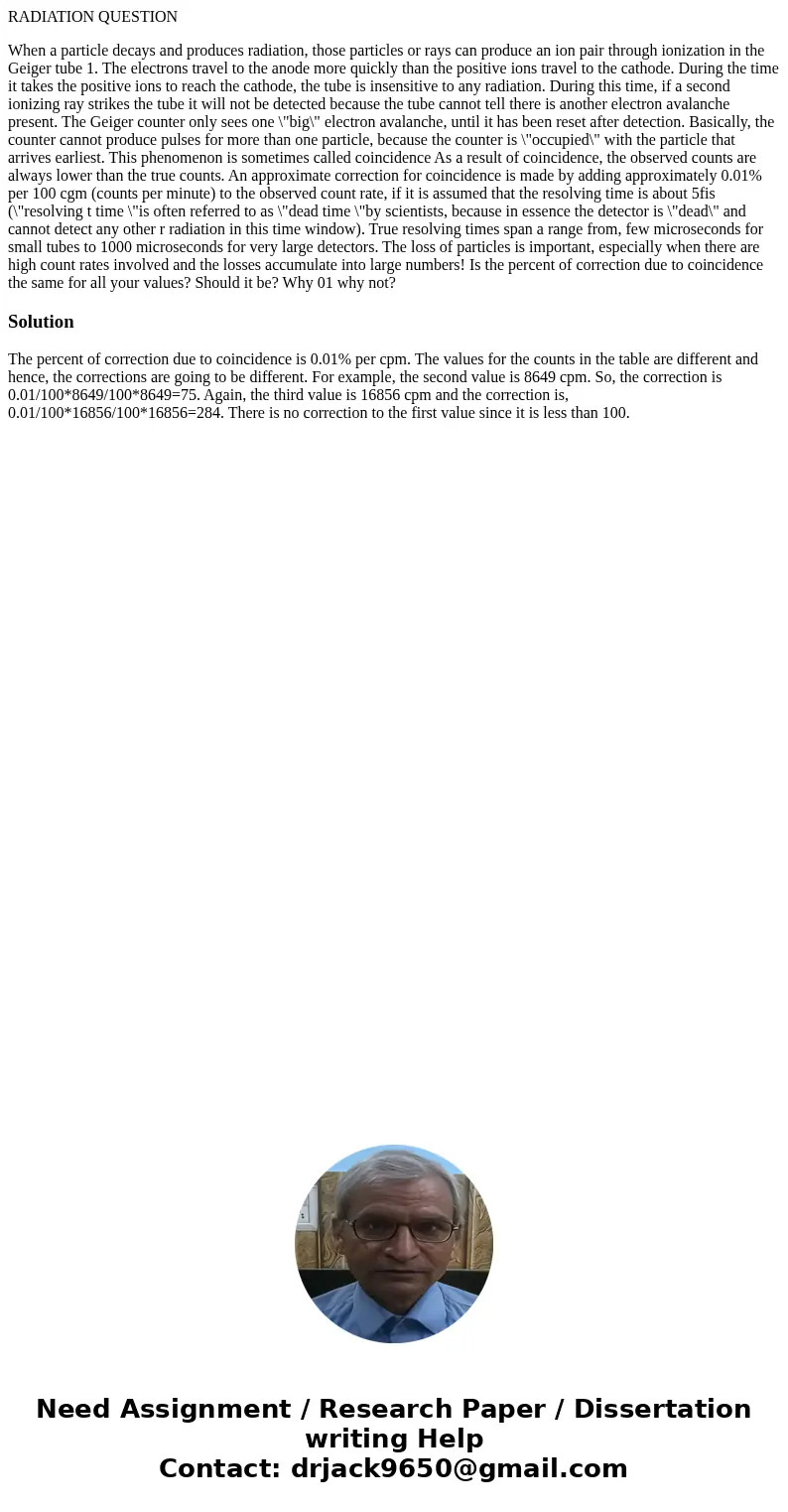RADIATION QUESTION When a particle decays and produces radia
RADIATION QUESTION
When a particle decays and produces radiation, those particles or rays can produce an ion pair through ionization in the Geiger tube 1. The electrons travel to the anode more quickly than the positive ions travel to the cathode. During the time it takes the positive ions to reach the cathode, the tube is insensitive to any radiation. During this time, if a second ionizing ray strikes the tube it will not be detected because the tube cannot tell there is another electron avalanche present. The Geiger counter only sees one \"big\" electron avalanche, until it has been reset after detection. Basically, the counter cannot produce pulses for more than one particle, because the counter is \"occupied\" with the particle that arrives earliest. This phenomenon is sometimes called coincidence As a result of coincidence, the observed counts are always lower than the true counts. An approximate correction for coincidence is made by adding approximately 0.01% per 100 cgm (counts per minute) to the observed count rate, if it is assumed that the resolving time is about 5fis (\"resolving t time \"is often referred to as \"dead time \"by scientists, because in essence the detector is \"dead\" and cannot detect any other r radiation in this time window). True resolving times span a range from, few microseconds for small tubes to 1000 microseconds for very large detectors. The loss of particles is important, especially when there are high count rates involved and the losses accumulate into large numbers! Is the percent of correction due to coincidence the same for all your values? Should it be? Why 01 why not?Solution
The percent of correction due to coincidence is 0.01% per cpm. The values for the counts in the table are different and hence, the corrections are going to be different. For example, the second value is 8649 cpm. So, the correction is 0.01/100*8649/100*8649=75. Again, the third value is 16856 cpm and the correction is, 0.01/100*16856/100*16856=284. There is no correction to the first value since it is less than 100.

 Homework Sourse
Homework Sourse